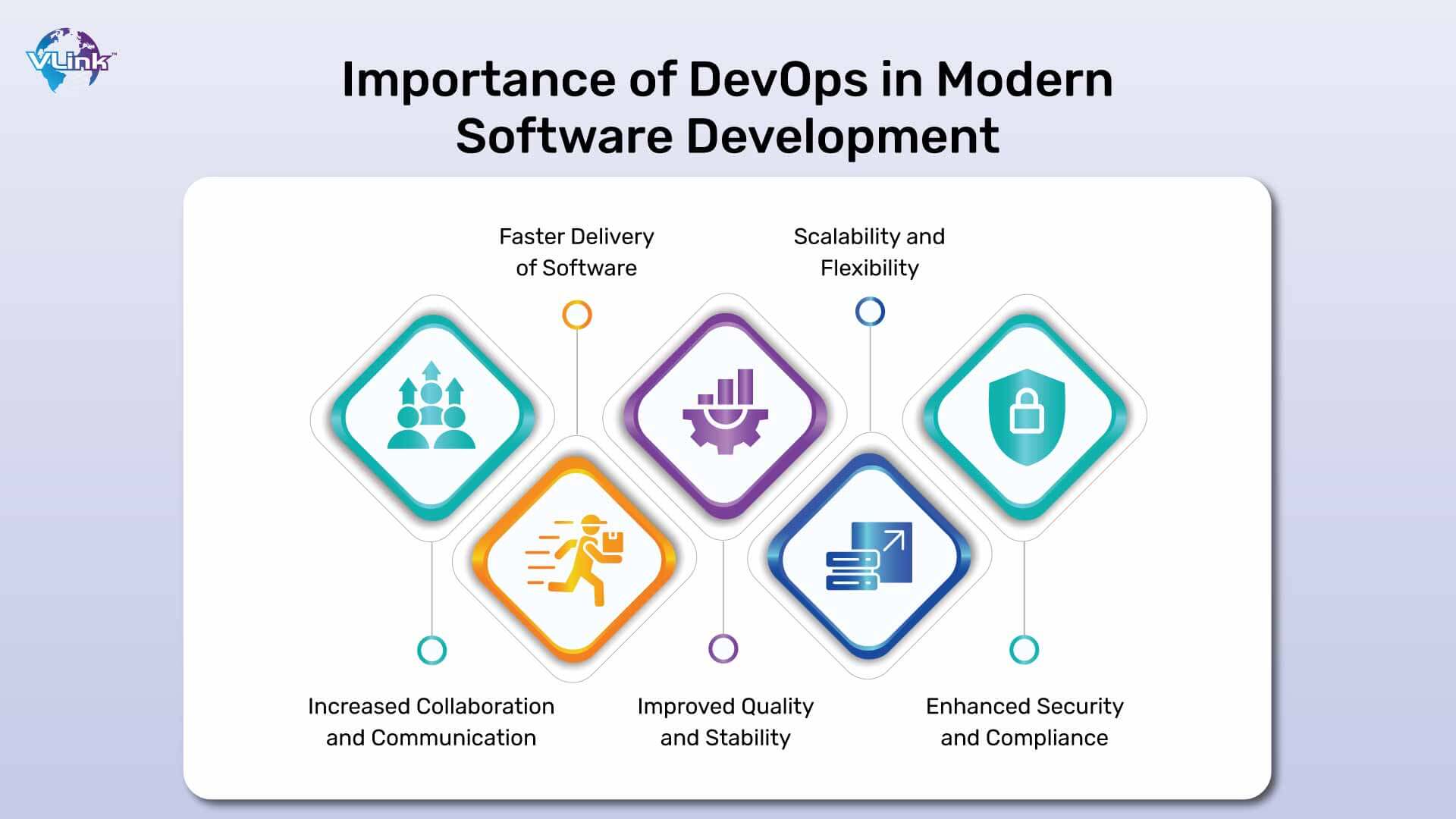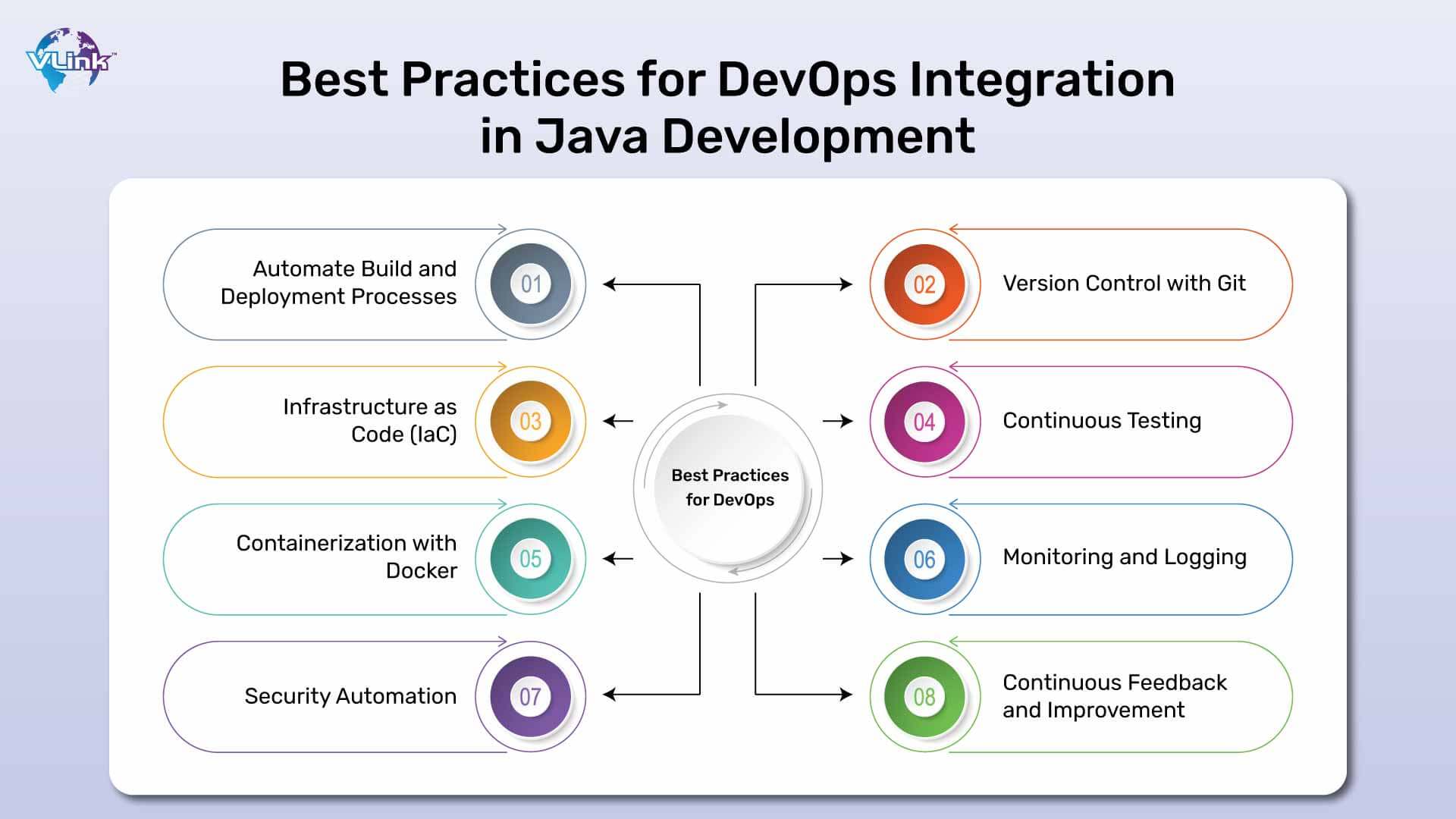Every year, we observe the IT industry evolving at an accelerated pace. Over two decades have passed since the revolutionary slogan "Write once, run anywhere" set a new standard of anticipation for software developers. As a result, a growing collection of tools has taken Java development to the next level.
DevOps represents the fusion of tools, facilitating the rapid development of Java applications and other modern software. In this blog, we will explore practices for DevOps Integration in Java development.
Let's first start with DevOps integration in Java development definition and its importance in modern software development.
What is DevOps Integration in Java Development?
DevOps integration in Java development involves incorporating continuous integration, delivery, and deployment practices into the Java development lifecycle. It emphasizes collaboration between development and operations teams to automate processes. JavaDevOps ensures faster releases and maintains high-quality software through tools like Jenkins, Docker, and Maven.
Importance of DevOps in Modern Software Development

Here are five reasons why DevOps is essential in modern software development:
Increased Collaboration and Communication
DevOps increases collaboration between software development lifecycle process including development, operations, and other stakeholders. By breaking down silos and fostering a culture of collaboration, teams can work together more efficiently, leading to faster delivery of high-quality software.
Faster Delivery of Software
DevOps practices such as continuous integration, continuous delivery (CI/CD), and automation streamline the software development process. By automating repetitive tasks and implementing CI/CD pipelines, teams can release software updates more frequently and reliably, reducing time-to-market and enabling faster response to customer feedback and market demands.
Improved Quality and Stability
Through practices like automated testing, infrastructure as code (IaC), and monitoring, DevOps helps ensure the quality and stability of software releases. Automated testing helps catch bugs earlier in the development cycle.
Infrastructure as code allows for consistent and reproducible deployment environments. Continuous monitoring helps identify and address issues in real time, enhancing overall system stability and reliability. You can achieve better business performance with cloud devops automation.
Scalability and Flexibility
DevOps principles emphasize scalability and flexibility, enabling organizations to adapt to changing business requirements and scale their infrastructure and applications as needed. By leveraging cloud technologies, containerization, and orchestration tools, DevOps enables organizations to deploy and manage applications more efficiently, regardless of scale or complexity.
Enhanced Security and Compliance
Security is a critical aspect of modern software development, and DevOps practices can help improve security posture and compliance with regulatory requirements. By integrating security in development through DevSecOps, organizations can identify and mitigate security vulnerabilities earlier in the lifecycle. As a result, it reduces the risk of security breaches and ensures compliance with industry regulations and standards.
By adopting the practices of DevOps integration in Java development, organizations can accelerate innovation, improve operational efficiency, and deliver more excellent value to their customers.
Best Practices for Seamless DevOps Integration in Java Development

Here are some best practices for achieving seamless DevOps integration in Java development:
Automate Build and Deployment Processes
Building automation tools like Maven or Gradle can be used to automate compilation, packaging, and dependency management processes. Implement continuous integration (CI) pipelines using tools like Jenkins, GitLab CI/CD, or Travis CI to automatically build and test Java applications whenever changes are pushed to the version control system.
Version Control with Git
Utilize Git as the version control system for managing source code changes. Adopt branching strategies such as Gitflow to facilitate collaboration among developers and enable parallel development of features, bug fixes, and hotfixes. Use pull requests for code reviews to ensure code quality and maintain a clean codebase.
Infrastructure as Code (IaC)
Define infrastructure configurations using tools like Terraform or Ansible to manage infrastructure as code. Infrastructure configurations should be versioned alongside application code, allowing for consistent and reproducible environments across development, testing, and production environments.
Continuous Testing
Implement automated testing practices to ensure the quality and reliability of Java applications. Use unit testing frameworks like JUnit or TestNG to write unit tests and validate individual components. Additionally, different type of software testing such as integration testing, functional testing, and end-to-end testing use tools like Selenium or Cucumber to validate application behavior across different layers.
Containerization with Docker
Containerize Java applications using Docker to create lightweight, portable, and consistent runtime environments. Docker containers encapsulate application dependencies and configurations, enabling seamless deployment across different environments without compatibility issues. Use container orchestration platforms like Kubernetes to manage containerized applications at scale.
Monitoring and Logging
Integrate logging and monitoring solutions such as ELK stack (Elasticsearch, Logstash, Kibana) or Prometheus with Grafana to monitor application performance, detect anomalies, and troubleshoot issues in real time. Implement centralized logging to aggregate logs from different components and facilitate log analysis to identify and resolve issues.
Security Automation
Embed security practices into the DevOps pipeline by integrating security scanning tools such as SonarQube or OWASP Dependency-Check to identify security vulnerabilities and code quality issues early in the development process. Perform regular security assessments, vulnerability scans, and penetration testing to ensure the integrity and security of Java applications.
Continuous Feedback and Improvement
Foster a culture of continuous improvement by soliciting feedback from stakeholders, monitoring key performance indicators (KPIs), and conducting post-mortems to reflect on successes and failures. Use feedback to iterate on development processes, improve collaboration, and enhance overall DevOps maturity over time.
By following these best practices, organizations can achieve seamless integration of DevOps into Java development, enabling faster delivery of high-quality software and fostering a culture of collaboration, automation, and continuous improvement.
Monitoring and Security in Java DevOps
Monitoring and security are crucial aspects of DevOps in Java development, ensuring the reliability, performance, and security of applications throughout the software development lifecycle. Here's how monitoring and security are integrated into Java DevOps:
Application Performance Monitoring (APM)
- Utilize APM tools like New Relic, AppDynamics, or Dynatrace to monitor the performance of Java applications in real time.
- Monitor metrics such as response time, throughput, error rates, and resource utilization (CPU, memory, disk I/O) to identify performance bottlenecks and optimize application performance.
- Implement distributed tracing to trace transactions across microservices and identify latency issues within distributed architectures.
Logging and Log Management
- Logging frameworks like Log4j or Logback can be used to generate structured logs that capture important events and error messages within Java applications.
- Centralize logs using log management platforms such as ELK stack (Elasticsearch, Logstash, Kibana) or Splunk for log aggregation, analysis, and visualization.
- Implement log rotation and retention policies to manage log files efficiently and comply with data retention requirements.
Infrastructure Monitoring
Monitor the health and performance of infrastructure components such as servers, databases, and network devices using infrastructure monitoring tools like Prometheus, Nagios, or Zabbix.
Set up alerts and notifications for critical infrastructure events such as CPU spikes, disk space shortages, or database connection failures to proactively address issues.
Security Scanning and Vulnerability Management
Integrate security scanning tools like SonarQube, OWASP Dependency-Check, or Snyk into the CI/CD pipeline to identify security vulnerabilities and code quality issues in Java applications.
Perform regular vulnerability scans and penetration tests to identify and remediate security weaknesses in application code, libraries, and dependencies.
Implement secure coding practices and adhere to OWASP Top 10 guidelines to mitigate common security risks such as injection attacks, cross-site scripting (XSS), and security misconfigurations.
Access Control and Authentication
Implement role-based access control (RBAC) and least privilege principles to restrict access to sensitive resources and functionalities within Java applications.
Integrate authentication and authorization mechanisms such as OAuth 2.0, JWT (JSON Web Tokens), or LDAP (Lightweight Directory Access Protocol) to authenticate users and authorize access to protected resources.
Use secure communication protocols like HTTPS to encrypt data in transit and protect sensitive information from eavesdropping and man-in-the-middle attacks.
Incident Response and Compliance
- Develop incident response plans and playbooks to respond to security incidents and breaches in Java applications effectively.
- Conduct regular security audits and compliance assessments to ensure adherence to regulatory requirements such as GDPR, HIPAA, or PCI DSS.
- Maintain documentation and audit trails of security-related activities, including security incidents, remediation efforts, and compliance assessments.
By integrating monitoring and security practices into Java DevOps processes, organizations can proactively identify and address performance issues, security vulnerabilities, and compliance risks. It’ll enhance the reliability, security, and compliance of Java applications deployed in production environments.
Best Tools for Java DevOps
Some of the best DevOps tools for-Java development encompasses a range of functions, including version control, continuous integration, deployment, monitoring, and more. Here are a few of top Java DevOps tools:
- Version Control: Git (GitHub, GitLab, Bitbucket)
- Continuous Integration: Jenkins, GitLab CI/CD, Travis CI
- Continuous Deployment: Jenkins, GitLab CI/CD, Travis CI, CircleCI
- Build Automation: Maven, Gradle
- Configuration Management: Ansible, Chef, Puppet
- Containerization: Docker, Kubernetes
- Application Performance Monitoring (APM): New Relic, AppDynamics, Dynatrace
- Security Scanning: SonarQube, OWASP Dependency-Check, Snyk
- Infrastructure Provision: Terraform, AWS CloudFormation, Azure Resource Manager
These tools facilitate automation, collaboration, and efficiency in Java DevOps workflows, enabling teams to deliver high-quality software faster and more reliably.
Build Java Applications with DevOps at VLink!
At VLink, we're dedicated to helping you build robust Java applications that are seamlessly integrated with DevOps practices. Our team of skilled professionals specializes in delivering end-to-end solutions that leverage the latest technologies and methodologies to streamline your development process.
With our expertise in Java development and DevOps and automation services, we ensure that your applications are not only scalable, efficient, and secure but also seamlessly integrated into your continuous integration and deployment pipelines.
Here's how we can assist you:
- Custom Java Development
- DevOps Integration
- Containerization
- Automated Testing
- Monitoring and Logging
- Cloud Migration
- Support and Maintenance
Hire our Java developers to unlock the full potential of software development combined with DevOps practices. It empowers your organization to innovate faster and deliver value to your customers efficiently.
Frequently Asked Questions
DevOps integration in Java development streamlines collaboration, accelerates delivery, and enhances quality. It automates build and deployment processes, fosters continuous testing and monitoring, and ensures security compliance. These practices facilitate faster time-to-market, improved scalability, and increased responsiveness to customer feedback, resulting in greater efficiency and competitiveness.
Popular DevOps tools for automated Java monitoring include Prometheus for metrics collection, Grafana for visualization, ELK stack (Elasticsearch, Logstash, Kibana) for log aggregation and analysis, and New Relic or AppDynamics for application performance monitoring.
Kubernetes enhances CI/CD pipelines by providing automated deployment, scaling, and management of containerized applications. It ensures consistency across environments, enables rapid testing, simplifies rollbacks, and optimizes resource utilization, resulting in faster and more reliable software delivery.








